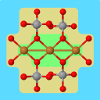Molcas Forum
Support and discussions for Molcas and OpenMolcas users and developers
You are not logged in.
- Topics: Active | Unanswered
Announcement
Please note: The forum's URL has changed. The new URL is: https://molcasforum.univie.ac.at. Please update your bookmarks!
You can choose an avatar and change the default style by going to "Profile" → "Personality" or "Display".#1 2019-10-07 16:52:38
- LucaBabetto
- Member
- Registered: 2018-11-21
- Posts: 31
Zero Field Splitting (D-tensor) calculation
Hello,
I'm trying to calculate the D-tensor of a series of organic molecules in their triplet state using OpenMolcas. From reading the manual it seems I need to use the SINGLE_ANISO module, however I'm not sure whether this type of calculation is only suitable for metal complexes with strong spin-orbit coupling.
For instance, I already carried out similar calculations in Orca and I've noticed the spin-orbit contribution for the systems I'm studying is - as expected - basically zero, and the only contributions are spin-spin in nature.
Could you please point me towards the correct use of the SINGLE_ANISO module for Zero Field Splitting calculations in organic triplets?
Regards
Luca
Offline
#2 2019-10-23 09:26:10
- nikolay
- Member

- From: Stuttgart
- Registered: 2016-03-21
- Posts: 55
Re: Zero Field Splitting (D-tensor) calculation
Hello Luca,
I may be wrong, but I think spin-spin interactions are not implemented.
Ignacio, can anybody confirm that?
General information on SINGLE_ANISO is there in the manual, and also in this long thread on the forum.
Offline
#3 2021-01-08 13:41:05
- amanuv
- Member
- Registered: 2019-05-07
- Posts: 12
Re: Zero Field Splitting (D-tensor) calculation
Hi Luca and nikolay:
I noticed that this thread is about D and E tensors, so I thought its reasobale to ask a question here.
Spin-orbit energy levels from D and E tensor:
I have Ho3+ based lanthanide complex of S=8, for which I have computed D and E tensor using &Single_aniso by providing following input:
&SINGLE_ANISO
crys
Ho
mltp
1
17
quax
2 Then I set-up a Hamiltonian as described in output:
H_zfs^{2}= D * [S_{Za}^2 - S*(S+1)/3] + E * [S_{Xa}^2 - S_{Ya}^2]After providing the D and E values from the output and diagonalizing the above Hamiltonian, the Eigen-values for this Hamiltonian is different than the Spin-orbit energy levels.
But when I set-up a crystal field Hamiltonian and privided the Crystal-Field parameters from the output the Spin-orbit energy matches.
I am wondering why I can not produce Spin-orbit energy levels from D and E tensor?
Offline
#4 2021-01-08 14:05:48
- nikolay
- Member

- From: Stuttgart
- Registered: 2016-03-21
- Posts: 55
Re: Zero Field Splitting (D-tensor) calculation
Hi amanuv,
I thought it should give the same (relative) eigenvalues within the multiplet.
How much are the differences?
I also don't really understand why do you use quax=2 ?
Offline
#5 2021-01-08 14:29:34
- amanuv
- Member
- Registered: 2019-05-07
- Posts: 12
Re: Zero Field Splitting (D-tensor) calculation
Thanks for quick response,
First, by using quax=2, I was trying to control the quantization axis.
The difference between eigen-values are about 100 cm-1 which is huge. I am using Mathemtica to diagonalize the Hamiltonian.
I am using Following operators:
a=8
J = DiagonalMatrix[{a, a, a, a, a, a, a, a, a, a, a, a, a, a, a, a,
a}];
Jz = DiagonalMatrix[{8, 7, 6, 5, 4, 3, 2, 1, 0, -1, -2, -3, -4, -5, -6, -7, -8}];
Jp = DiagonalMatrix[{4, Sqrt[30], Sqrt[42], 2 Sqrt[13], 2 Sqrt[15], Sqrt[66], Sqrt[70], 6 Sqrt[2], 6 Sqrt[2], Sqrt[70], Sqrt[66], 2 Sqrt[15], 2 Sqrt[13], Sqrt[42], Sqrt[30], 4}, 1];
Jn = DiagonalMatrix[{4, Sqrt[30], Sqrt[42], 2 Sqrt[13], 2 Sqrt[15], Sqrt[66], Sqrt[70], 6 Sqrt[2], 6 Sqrt[2], Sqrt[70], Sqrt[66], 2 Sqrt[15], 2 Sqrt[13], Sqrt[42], Sqrt[30], 4}, -1];
HD = DD*(Jz.Jz - 1/3 (J.J + J)) + EE*((Jp.Jp + Jn.Jn)/2);I dont know, how can I import my Mathematica file here. Or If you prefer, I can send you by email.
Thanks in advance.
Offline
#6 2021-01-08 20:15:17
- amanuv
- Member
- Registered: 2019-05-07
- Posts: 12
Re: Zero Field Splitting (D-tensor) calculation
Hi again nikolay,
I think, I figured out why D and E are insufficient to produce Spin-orbit energy levels. I learned from following paper that:
https://aip.scitation.org/doi/10.1063/1.4739763
“In the case of relatively weak spin-orbit coupling the zero-field splitting can be described in the second order perturbation theory after spinorbit coupling leading to the following ZFS Hamiltonian in the crystal field approximation”
In my case Spin-orbit coupling is very strong that’s why I need higher-order crystal-field parameters (B44, B66).
Thanks for your help.
Offline
